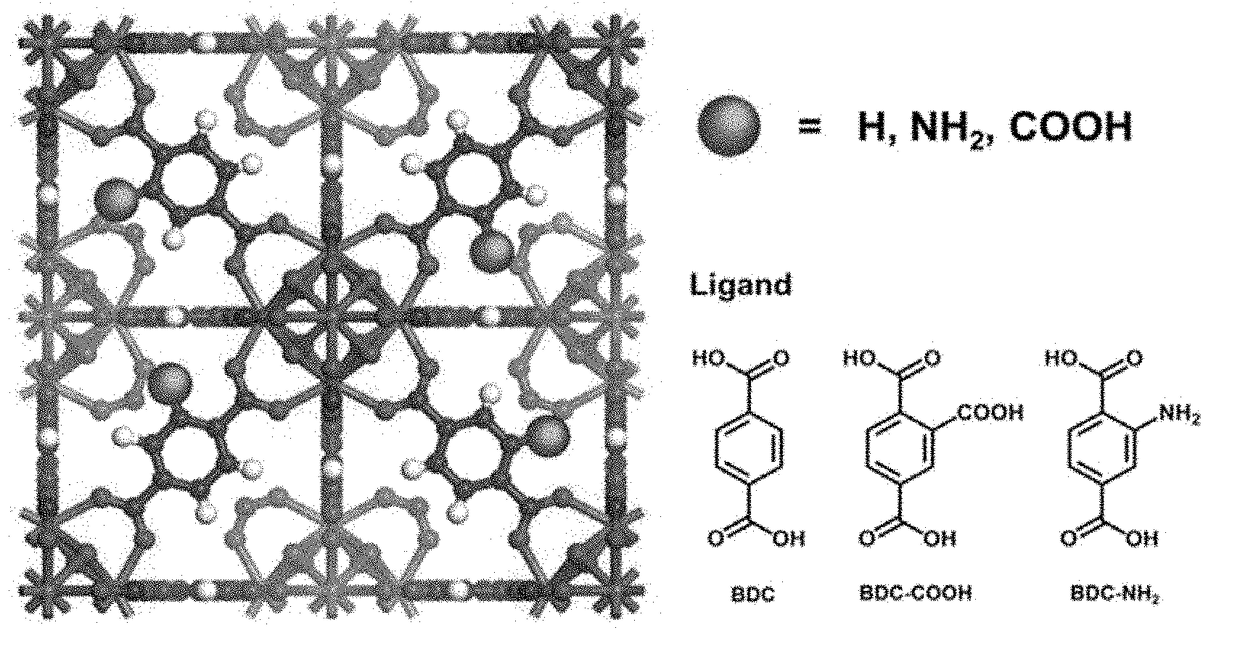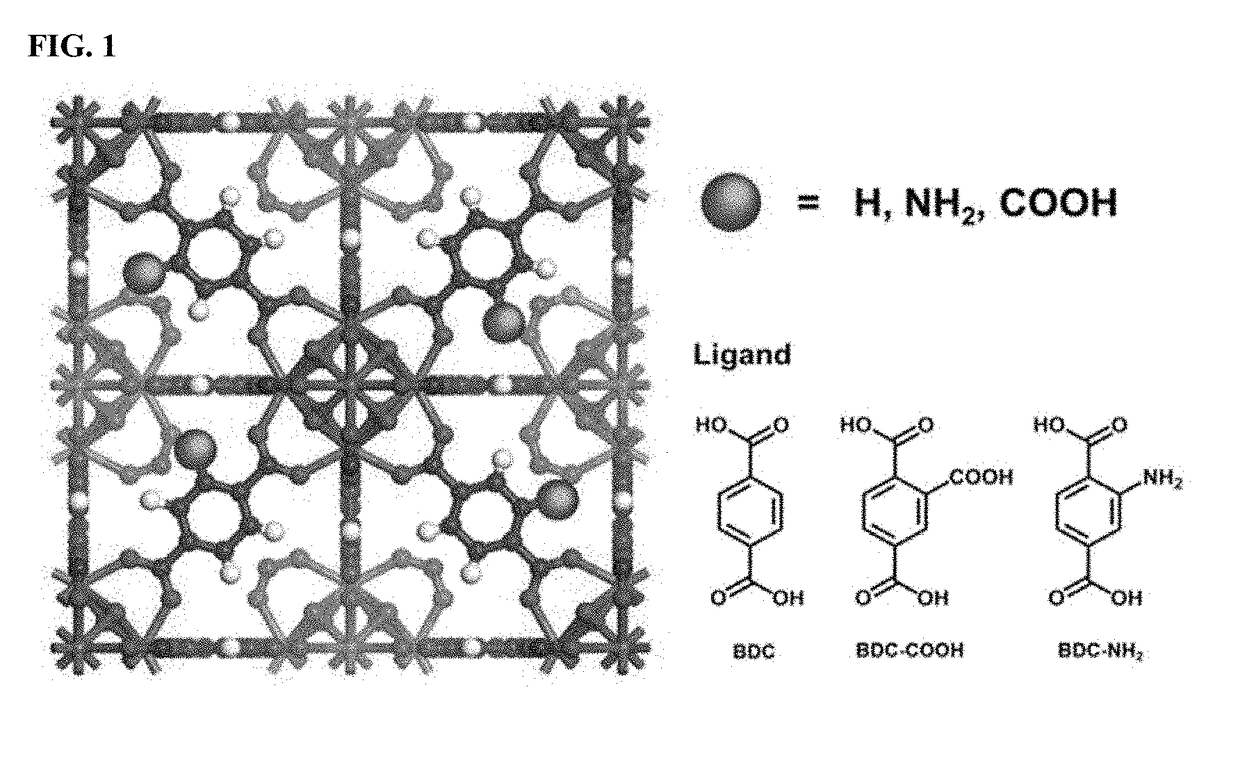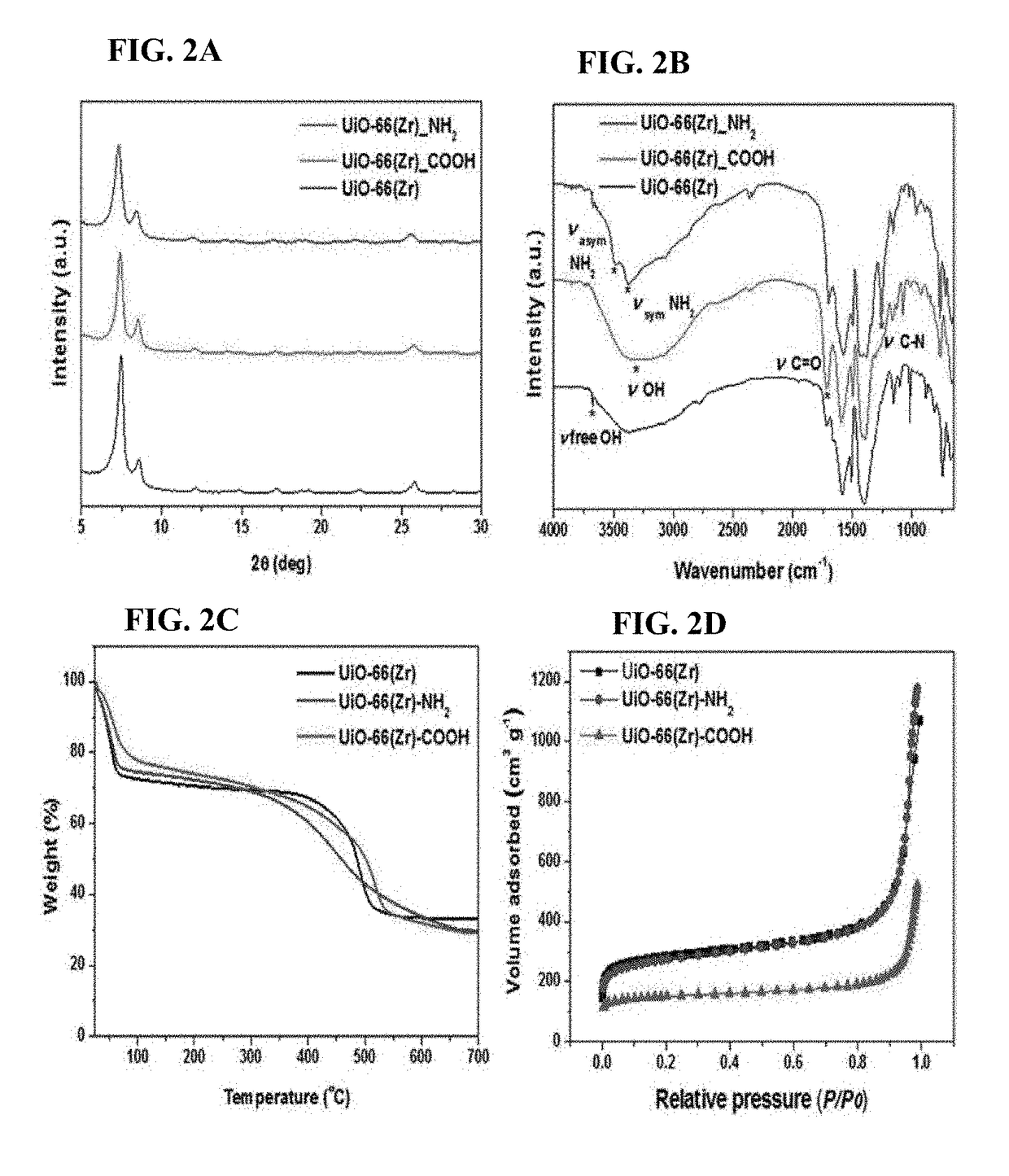Zirconium-based metal-organic frameworks as catalyst for transfer hydrogenation
a metal-organic framework and catalyst technology, applied in the direction of organic compounds/hydrides/coordination complex catalysts, physical/chemical process catalysts, organic reduction, etc., can solve the problems of limiting the practical application of catalysts, affecting the application of catalytic processes for producing various platforms and value-added chemical materials directly from carbohydrates or directly from lignocellulosic biomass, and requiring enormous effort. , to achieve the effect of excellent transfer hydrogenation
- Summary
- Abstract
- Description
- Claims
- Application Information
AI Technical Summary
Benefits of technology
Problems solved by technology
Method used
Image
Examples
preparation example 1
r)
[0058]UiO-66(Zr) was synthesized by the reflux method. Specifically, H2BDC (4.62 g, 27.8 mmol) was dissolved in DMF (23.6 g, 322 mmol) in a 100 mL round flask at room temperature. Then, ZrOCl2.8H2O (8.96 g, 27.8 mmol) and 37% HCl (4.63 mL, 5.47 g, 150 mmol) were added to the mixture. The molar ratio of the final ZrOCl2.8H2O / H2BDC / DMF / HCl mixture was 1:1:11.6:5.4. The reaction mixture was vigorously stirred to obtain a homogeneous gel. The mixture was heated to 150° C. and maintained thereat for 6 hours to obtain crystalline UiO-66(Zr) solid. The thus-obtained product was recovered from the slurry, re-dispersed in DMF at 60° C. for 6 hours while stirring, and recovered by filtration. The same procedure was repeated twice using methanol instead of DMF. Finally, the solid product was dried at 100° C. overnight.
Preparation Example 2: Synthesis of UiO-66(Zr)—NH2
[0059]UiO-66(Zr)—NH2 was synthesized by the reflux method. First, 2-aminoterphthalic acid 1.94 g (10.7 mmol) was dissolved in...
preparation example 3
r)—COOH
[0060]UiO-66(Zr)—COOH was also synthesized by the reflux method. Briefly, 1,2,4-benzenetricarboxylic acid (14 g, 66.7 mmol) and ZrOCl2.8H2O (10.74 g, 33.3 mmol) were dissolved in water (30 mL) and benzoic acid (20.4 g, 166.6 mmol) in a 100 mL round flask. The molar ratio of the final ZrOCl2.8H2O / H3BTC / H2O / C6H5COOH mixture was 1:2:50:5. Then, the reaction solution was ramped to 100° C. and kept thereat for 24 hours. Post-treatment was also performed in exactly the same manner as in the procedure mentioned for UiO-66(Zr)—NH2.
preparation example 4
[0061]H3BTC (4.8 g, 0.5 mmol) and ZrOCl2.8H2O (3.3 g, 0.5 mmol) were added to a solvent mixture of DMF / formic acid (270 mL / 360 mL). The reaction mixture was transferred to a 1 L Teflon-lined pressure autoclave and heated at 135° C. for 2 days. The white precipitate was collected by centrifugation, washed in DMF for 24 hours, and washed in ethanol for 24 hours. Each solvent was replaced twice during the above period, and finally, the product was dried at 100° C. for 12 hours.
PUM
| Property | Measurement | Unit |
|---|---|---|
| Temperature | aaaaa | aaaaa |
| Current | aaaaa | aaaaa |
| Digital information | aaaaa | aaaaa |
Abstract
Description
Claims
Application Information
 Login to View More
Login to View More - R&D
- Intellectual Property
- Life Sciences
- Materials
- Tech Scout
- Unparalleled Data Quality
- Higher Quality Content
- 60% Fewer Hallucinations
Browse by: Latest US Patents, China's latest patents, Technical Efficacy Thesaurus, Application Domain, Technology Topic, Popular Technical Reports.
© 2025 PatSnap. All rights reserved.Legal|Privacy policy|Modern Slavery Act Transparency Statement|Sitemap|About US| Contact US: help@patsnap.com



